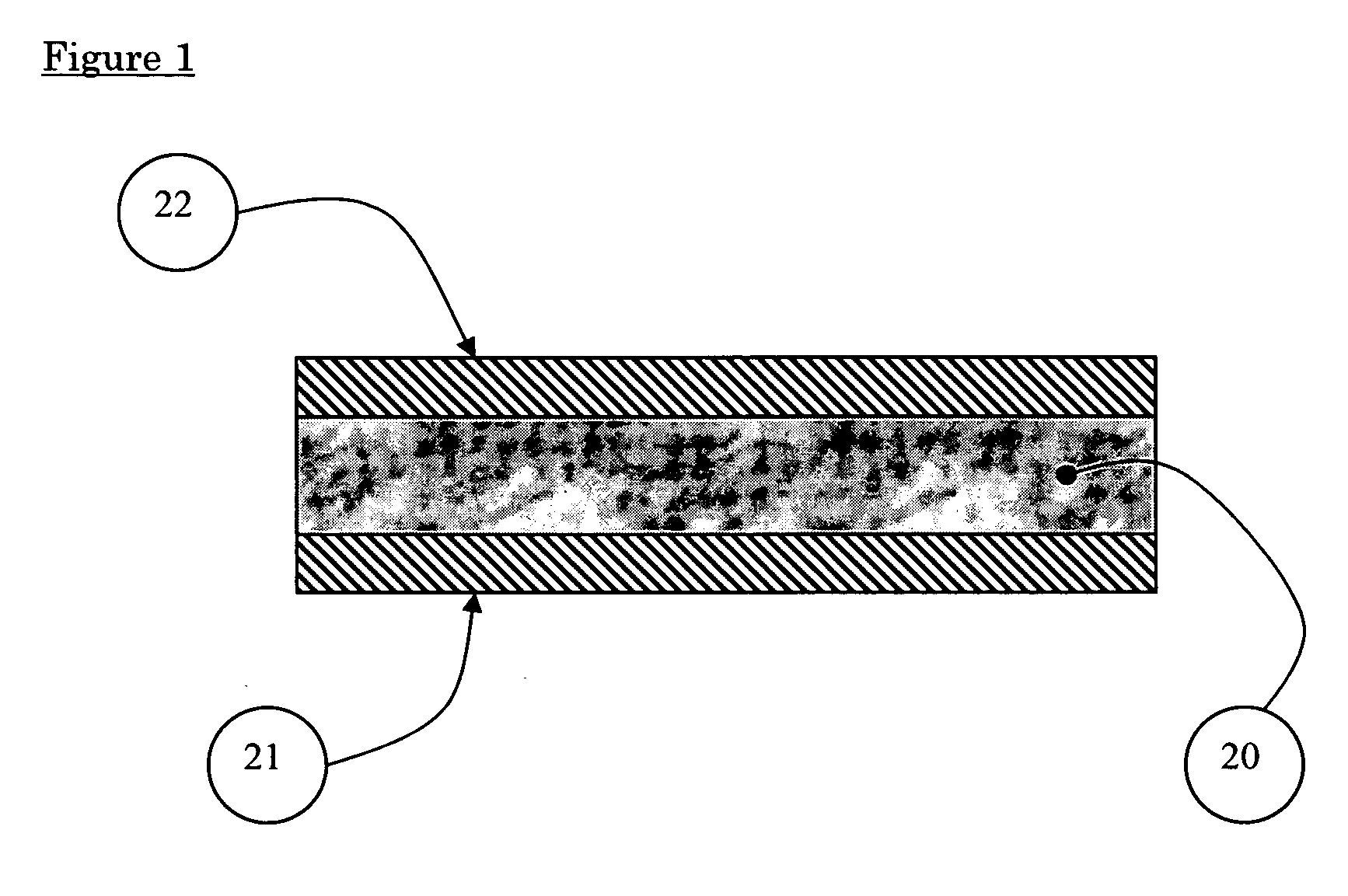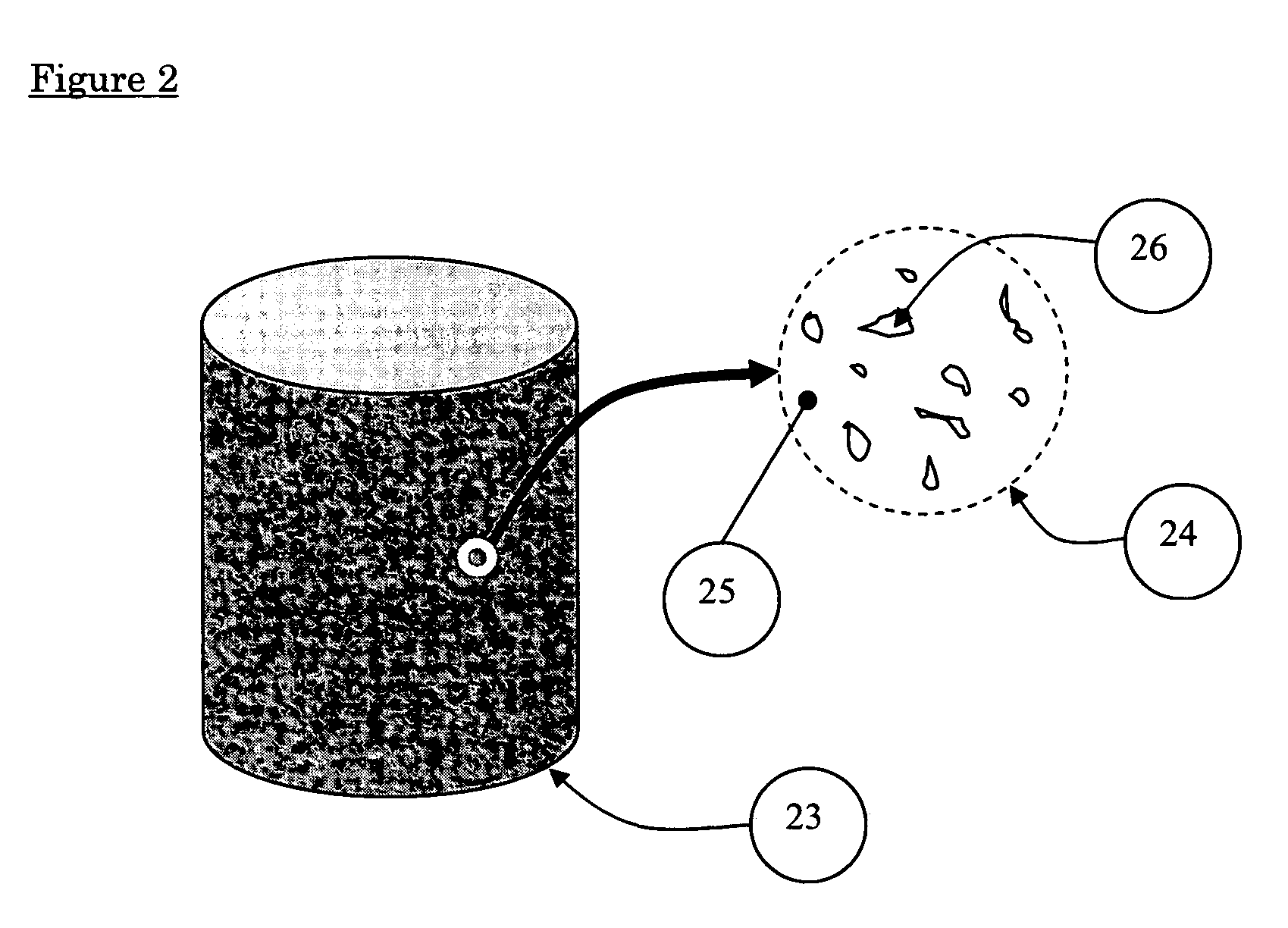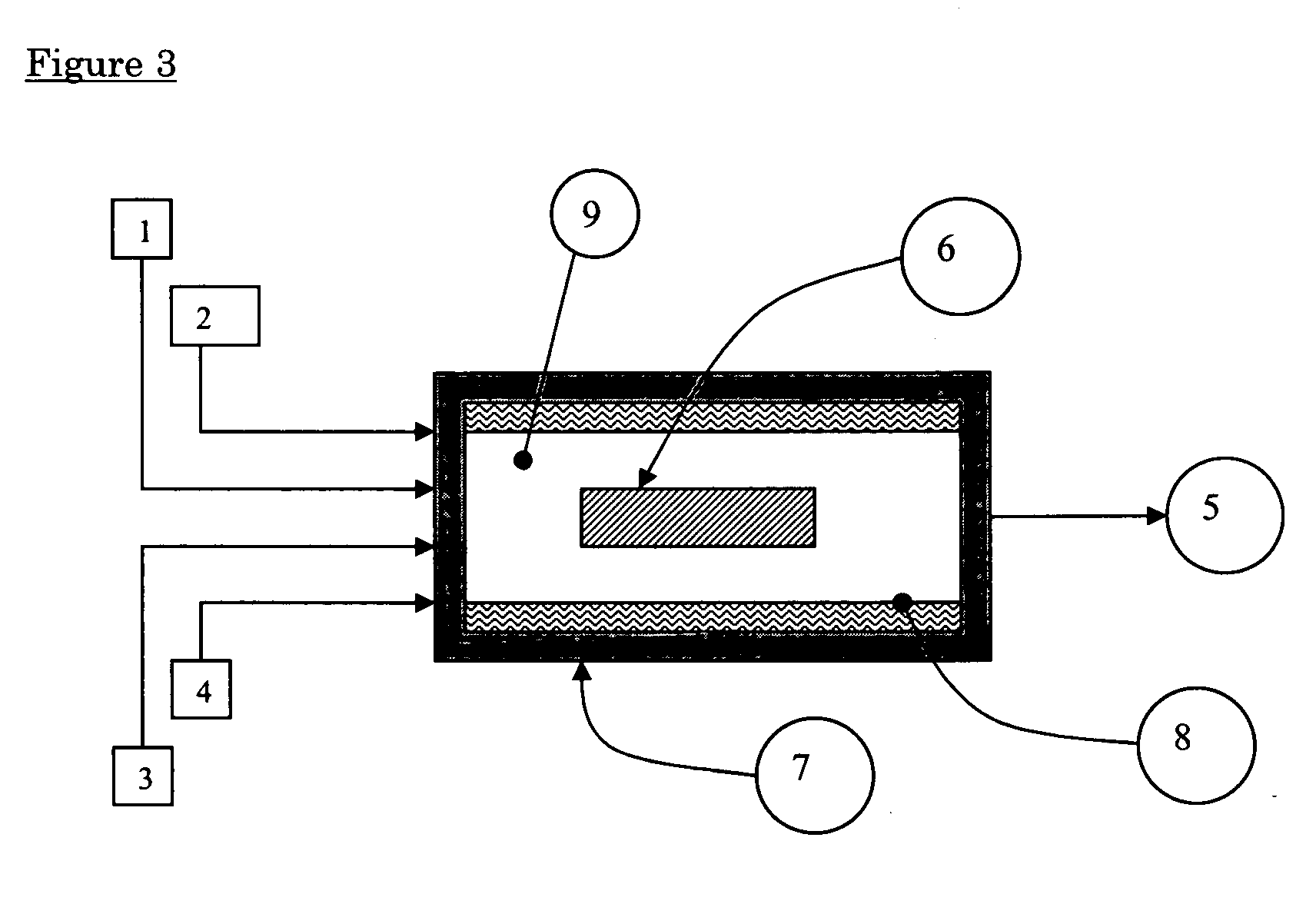Nanotube composites and methods for producing
- Summary
- Abstract
- Description
- Claims
- Application Information
AI Technical Summary
Benefits of technology
Problems solved by technology
Method used
Image
Examples
example 2
[0065] Polymer composites similar to those described in example 1 were produced with net carbon nanotubes loadings of 2% to 25%.
example 3
[0066] Experiments were performed to determine if unpurified carbon nanotubes could be mixed with a POE oil to form a non-curing thermal joint compound, also commonly referred to as thermal grease or paste. We found that the unpurified nanotubes had to be milled to produce a finer powder to be used as an effective thermal paste. Experiments have shown that for the temperature range tested, namely temperature gradients between about 15 to 50° C., the thermal resistance of the dry copper joint was constant at 0.0013° C.-m2 / Watt, The thermal resistance of the essentially identical copper joint (tested simultaneously in parallel) which was coated with an unpurified nanotube thermal paste displayed a thermal resistance of only 0.0004° C.-m2 / Watt. That represents a 69% reduction in the thermal resistance relative to the dry joint. The unpurified nanotubes could be added to this oil matrix in about 2% to 80% by weight.
PUM
 Login to View More
Login to View More Abstract
Description
Claims
Application Information
 Login to View More
Login to View More - R&D
- Intellectual Property
- Life Sciences
- Materials
- Tech Scout
- Unparalleled Data Quality
- Higher Quality Content
- 60% Fewer Hallucinations
Browse by: Latest US Patents, China's latest patents, Technical Efficacy Thesaurus, Application Domain, Technology Topic, Popular Technical Reports.
© 2025 PatSnap. All rights reserved.Legal|Privacy policy|Modern Slavery Act Transparency Statement|Sitemap|About US| Contact US: help@patsnap.com



